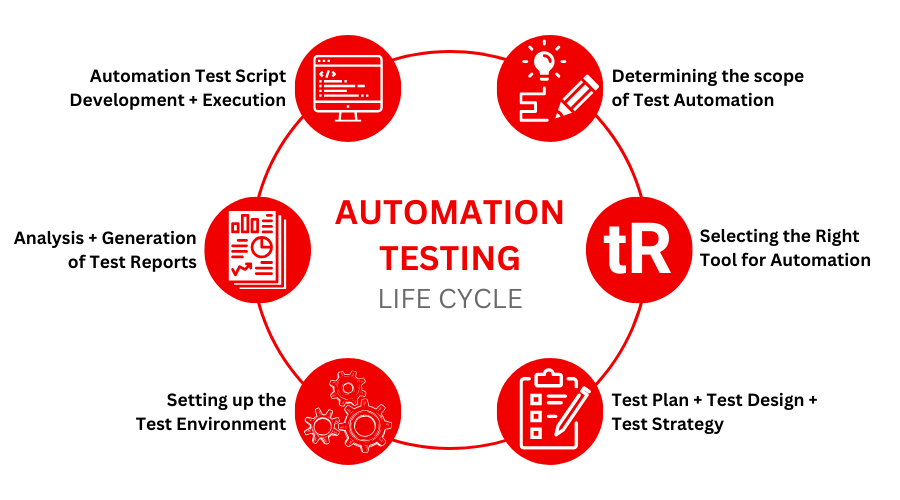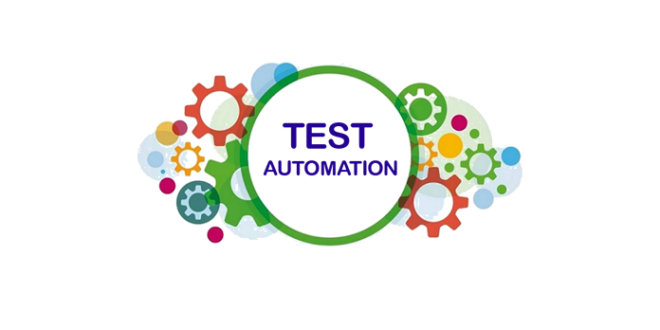Understanding Automation Testing: Devices, Techniques, and Benefits
Understanding Automation Testing: Devices, Techniques, and Benefits
Blog Article
From Guidebook to Automated Screening: A Comprehensive Overview to Transitioning Smoothly and Successfully
In the world of software application screening, the shift from handbook to automated processes has become an increasingly essential change for companies looking for to improve effectiveness and accuracy in their testing practices. As technology continues to advance, the demand for smooth and efficient automatic screening techniques has actually never ever been a lot more important. The trip from guidebook to automated screening is not without its challenges, however when approached tactically and with a clear plan in mind, the benefits can be considerable - automation testing. In this detailed overview, we will check out essential steps and considerations vital for a successful transition, from the initial selection of tools to the combination of automation into existing operations. Remain tuned to discover the insights that will help lead the method for a smoother and much more effective screening process.
Benefits of Automated Examining
Automated testing uses countless advantages, improving performance and precision in software program advancement processes. Automated examinations can be run simultaneously on multiple tools and running systems, considerably speeding up the screening stage contrasted to hands-on testing.
In addition, automated screening guarantees a higher degree of accuracy in discovering problems. Consistency in testing is additionally boosted, as automated examinations carry out the exact same steps specifically each time they are run.
Picking the Right Devices

Firstly, assess your purposes and needs. Understand the range of your task, the modern technologies included, and the capability of your group. This evaluation will assist you establish the capabilities and functions you need in your screening devices.
Second of all, consider the compatibility of the devices with your existing processes and systems. Smooth assimilation with your current software application growth lifecycle is important to ensure a smooth shift to automation.
Furthermore, assess the scalability and adaptability of the devices. As your testing needs advance, the devices should be able to adjust and suit adjustments properly.
Last but not least, factor in the support and neighborhood around the tools. Durable assistance and an energetic individual community can provide important resources and aid when applying automated screening. By thoroughly taking into consideration these facets, you can select the right tools that align with your requirements and set the phase for a successful shift to automated screening.
Writing Efficient Examination Scripts

When crafting test manuscripts, it is vital to consider the certain needs of the software program being evaluated and make certain that the scripts resolve all vital functionalities. Detailed and clear naming conventions for examination scripts and test instances can improve readability and maintainability. Furthermore, incorporating error handling devices within the test scripts can aid in identifying and resolving issues immediately.
Furthermore, organizing examination manuscripts into modular parts can enhance reusability and scalability, lowering redundancy and enhancing effectiveness in examination manuscript maintenance. Routine testimonials and updates to test scripts are critical to equal progressing software demands and capabilities. By following these principles, testers can produce durable and reliable test scripts that contribute dramatically to the success of automated screening processes.
Integrating Automation Into Workflows
By effortlessly integrating automated screening tools like Selenium or Appium right into the software growth lifecycle, teams can attain faster feedback on code adjustments, leading to quicker bug detection and resolution. This assimilation allows for continual testing throughout the advancement procedure, guaranteeing that any kind of blog problems are recognized early on, resulting in higher software program quality. Appropriate assimilation of automation tools requires cooperation between advancement, screening, and operations teams to develop a unified operations that optimizes effectiveness and performance in delivering top notch software products.
Making Sure a Smooth Shift
Efficiently transitioning to automated testing includes precise planning and cautious execution to maximize and reduce interruptions effectiveness in the software development procedure - automation testing. To guarantee a smooth change, it is important to begin by conducting a complete analysis of the existing screening Home Page procedures and identifying areas where automation can bring the most considerable benefits. Engaging with all stakeholders at an early stage in the procedure, including designers, testers, and job managers, is important for gathering support and buy-in for the automation effort
Communication is vital throughout this shift stage. Clear communication of the goals, benefits, and assumptions of automated screening aids to handle any type of resistance or issues that may occur. Additionally, providing adequate training and resources for employee to upskill in automation devices and strategies is crucial for making sure a successful transition.

Final Thought
In verdict, transitioning from guidebook to automated screening offers numerous benefits, including enhanced efficiency and dependability. By choosing the suitable tools, composing efficient test scripts, and integrating automation perfectly right into operations, companies can make sure a effective and my company smooth shift. It is necessary to accept automation as a useful possession in software application testing processes to improve total top quality and performance.
In the world of software screening, the change from handbook to automated processes has come to be a significantly essential change for companies seeking to enhance performance and precision in their testing practices. Automated examinations can be run concurrently on several tools and running systems, dramatically speeding up the testing phase contrasted to hands-on testing. Uniformity in testing is also boosted, as automated examinations execute the very same steps precisely each time they are run.To make certain the successful implementation of chosen testing devices, the creation of reliable examination scripts plays an essential function in validating the performance and performance of automated procedures - automation testing. By following these concepts, testers can create durable and effective test scripts that add substantially to the success of automated testing processes
Report this page